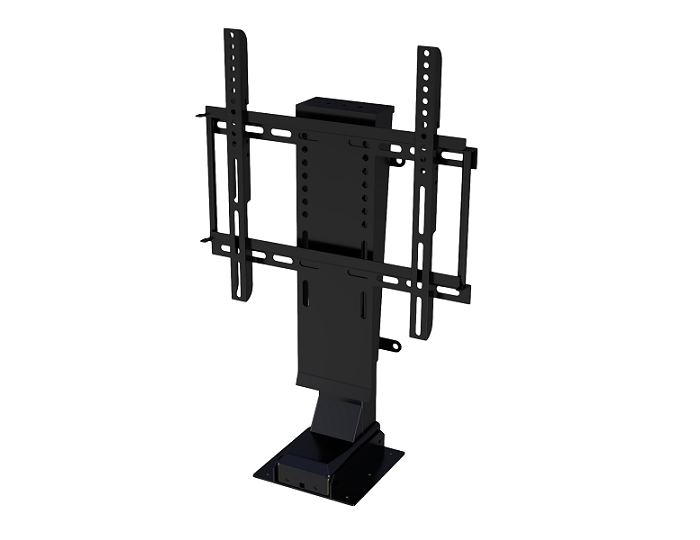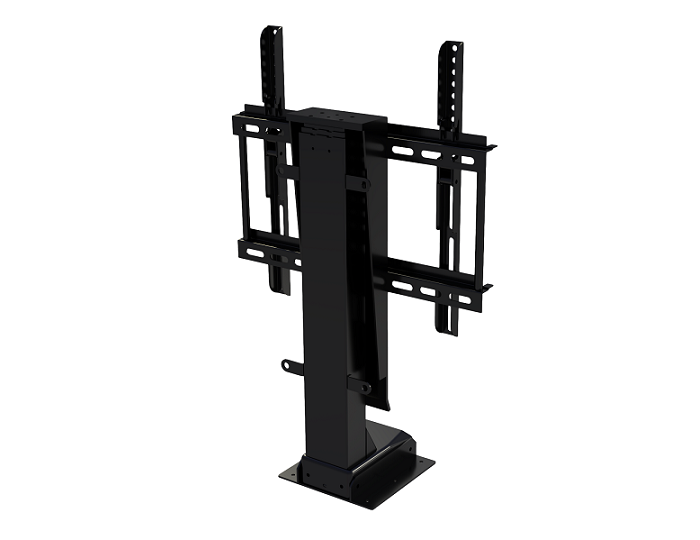



La trousse de système de levage TV motorisé TY-01 est l'avenir du divertissement à domicile. Que vous soyez un bricoleur ou un entrepreneur professionnel, c'est l'unité parfaite pour compléter l'expérience automatisée. Il peut être utilisé pour garder votre téléviseur hors de vue et apparaître d'un simple bouton, ou pour contrôler la hauteur du téléviseur pour un plaisir de visionnement optimal. Ce modèle est capable d'élever votre téléviseur jusqu'à 25 pouces et se contrôle facilement avec une télécommande sans fil.
Il peut être installé à la verticale ou à l'envers presque n'importe où, derrière lie manteau de cheminée, à l'intérieur des armoires ou sur le dessus d'une commode. Toute taille de téléviseur entre 32" et 60" est idéale pour le TY-01. 2 piles AAA pour télécommande sans fil vendues séparément.
Options sur mesure
Vous recherchez un actionneur mais les spécifications ne correspondent pas exactement à ce dont vous avez besoin ? Nous avons une longue liste de capacités pouvant être faites sur mesure pour vous assurer d'obtenir exactement ce dont vous avez besoin pour votre projet. Téléchargez la fiche technique de ce produit et découvrez vos options sur mesure !
La trousse de système de levage TV motorisé TY-01 est l'avenir du divertissement à domicile. Que vous soyez un bricoleur ou un entrepreneur professionnel, c'est l'unité parfaite pour compléter l'expérience automatisée. Il peut être utilisé pour garder votre téléviseur hors de vue et apparaître d'un simple bouton, ou pour contrôler la hauteur du téléviseur pour un plaisir de visionnement optimal. Ce modèle est capable d'élever votre téléviseur jusqu'à 25 pouces et se contrôle facilement avec une télécommande sans fil.
Il peut être installé à la verticale ou à l'envers presque n'importe où, derrière lie manteau de cheminée, à l'intérieur des armoires ou sur le dessus d'une commode. Toute taille de téléviseur entre 32" et 60" est idéale pour le TY-01. 2 piles AAA pour télécommande sans fil vendues séparément.
Options sur mesure
Vous recherchez un actionneur mais les spécifications ne correspondent pas exactement à ce dont vous avez besoin ? Nous avons une longue liste de capacités pouvant être faites sur mesure pour vous assurer d'obtenir exactement ce dont vous avez besoin pour votre projet. Téléchargez la fiche technique de ce produit et découvrez vos options sur mesure !
Le respect de normes est crucial pour notre entreprise afin de s'assurer que nos produits et services sont à un niveau de qualité qui garantie la satisfaction de la clientèle. Chez Progressive Automations, nous ne visons que le meilleur pour nos clients et nous nous continuons d'innover. Pour cette raison, nous sommes ravis d'annoncer que Progressive Automations est désormais certifié ISO 9001:2015 !
En savoir plusModèles 2D/3D





